Do you want to cut the cord, and connect your Android phone to your Ubuntu Linux PC by Wireless connection? Nah, Bluetooth is an old school. I prefer Wi-Fi.
Not just file transfers, how about knowing phone and battery status right from the Ubuntu desktop? You also get extra perks like being able to send SMS, the ability to ring and find your phone hiding under a pillow or in your jackets.
Let me introduce you to KDE Connect. It is a handy utility that can be installed on your Ubuntu, Linux Mint, elementary OS, and derivatives for free. It lets you manage your Android phone wirelessly via a Wi-Fi connection.
KDE Connect Features
Here are the most critical features of the utility.
- Shared clipboard: copy and paste between your devices
- Share files without wires on a fast Wi-Fi connection, not the snail pace Bluetooth anymore
- Send SMS to phone
- Find your phone by ringing it from your PC
- Start SFTP and open a file browser
- End-to-end TLS encryption means your information is safe
Installing KDE Connect
KDE Connect will work out of the box straight away in Budgie, Cinnamon, LXDE, Pantheon, Unity, and many other desktop environments. For GNOME desktop environments (Ubuntu 17.10), you need to install a Chrome extension for it to work, detail steps will be covered in Section 2 of this article.
On Ubuntu 16.04, 16.10, 17.04, Linux Mint 18.1, and elementary OS
Step 1) Launch “Terminal”.
Step 2) Enter the following command to add PPA.
sudo add-apt-repository ppa:webupd8team/indicator-kdeconnect
Step 3) Update sources on your computer.
sudo apt update
Step 4) Install the utility:
sudo apt install kdeconnect indicator-kdeconnect
On Ubuntu 17.10 (GNOME environment)
For Ubuntu 17.10 and above, we don’t use KDE Connect, but instead, we use a GNOME extension “GSConnect,” which is the KDE Connect integration for the GNOME desktop environment.
Step 1) Install GNOME shell extensions. Refer to our detailed guide on how to install GNOME shell extensions in Ubuntu 17.10. Once you are done, get back here and follow the next step.
Step 2) Download the latest stable zip file. It should like similar to gsconnect.andyholmes.github.io.zip.
Step 3) Launch Terminal and copy-paste this command to create a directory to store the extension system files.
mkdir -p ~/.local/share/gnome-shell/extensions
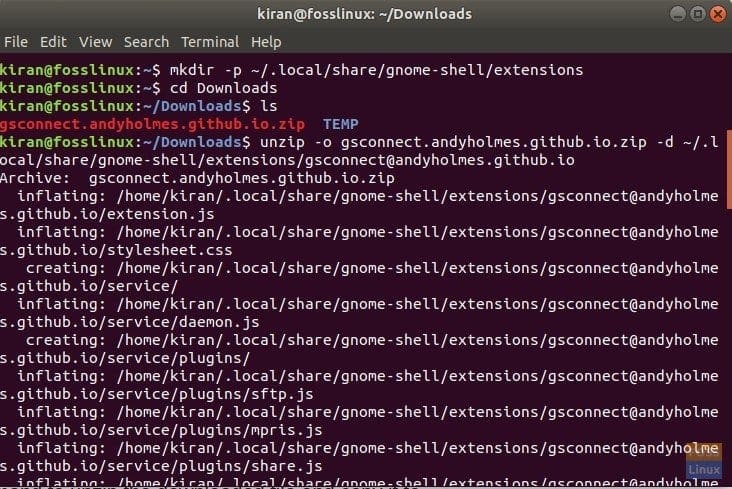
Showing installation in Ubuntu 17.10
Step 4) Navigate to the downloaded directory. I’m assuming the default “Downloads” location in this example below.
cd Downloads
Step 5) Copy and paste the following command to unzip the downloaded file and copy it to the system directory created in Step (2).
unzip -o gsconnect.andyholmes.github.io.zip -d ~/.local/share/gnome-shell/extensions/gsconnect@andyholmes.github.io
Step 6) Log off and log in again for the settings to take effect.
Step 7) Launch Firefox or Chrome browser (whatever you used for settings up GNOME extensions in Step #1) and go to https://extensions.gnome.org/local/
Step 8) Enable GS Connect.
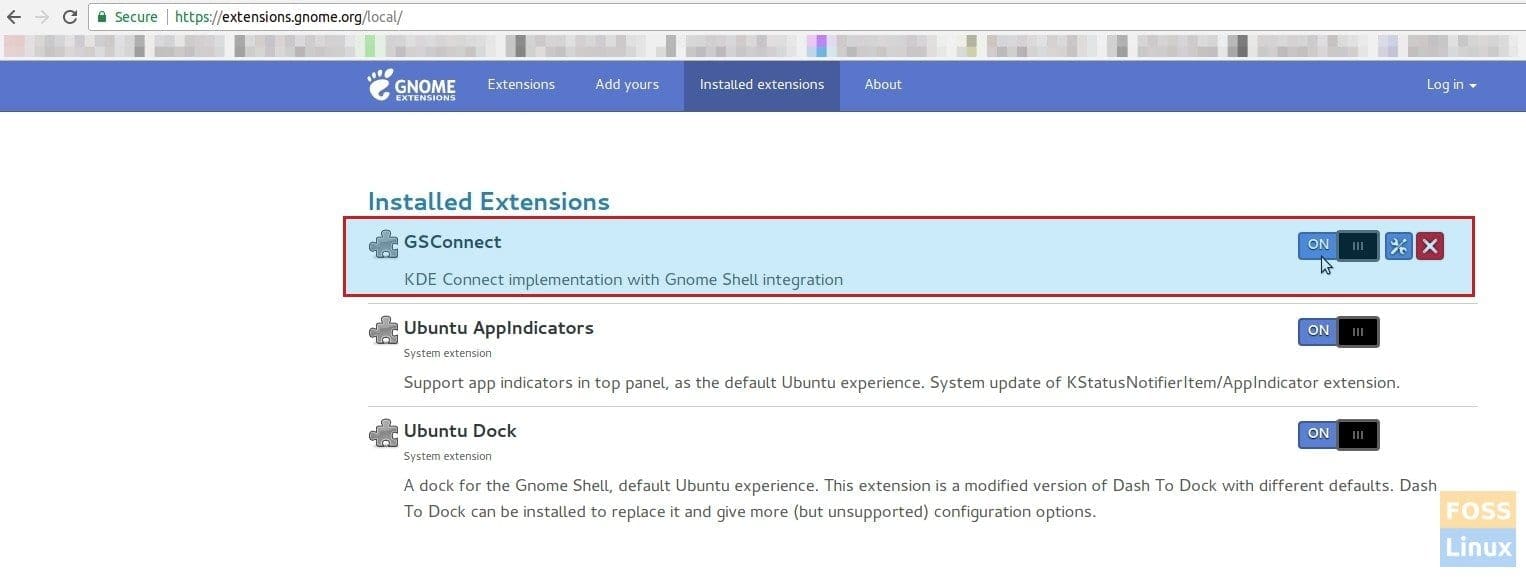
Enable GConnect
Step 9) You should now see a new icon in the Status bar. Click on that, and you will see “Mobile Devices.”
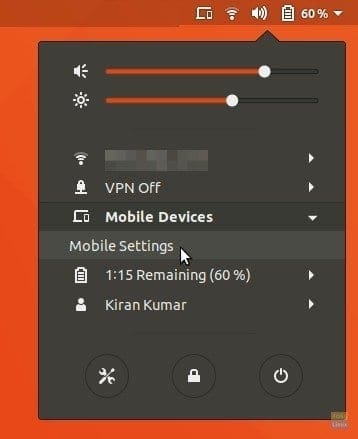
Ubuntu 17.10 Status Bar showing Mobile Devices
Integrating Android Phone and Ubuntu
I have tested this on Ubuntu 17.10 with GSConnect extension (Section #2 of this article). KDE Connect and GSConnect provide the same functionality between Android Phone and Ubuntu PC.
Step 1) On your Android Phone, install the KDE Connect app from Google Play.
Step 2) Launch the KDE Connect app on your phone and tap GSConnect to pair. Note that your Ubuntu PC and Android Phone must be on the same Wi-Fi network.
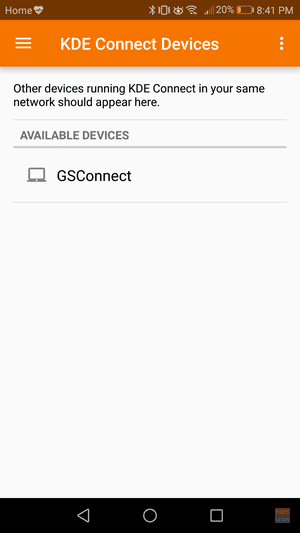
KDE Connect App in Android Phone
Step 3) Tap on “Request Pairing” on your phone.
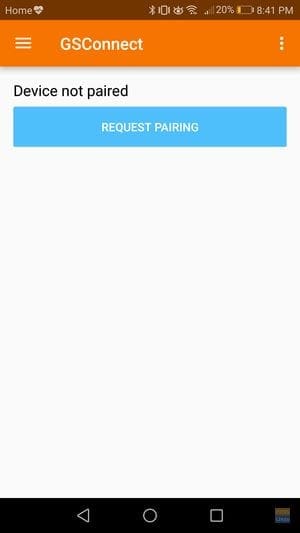
KDE Connect App in Android Phone Pairing
Step 4) On your Ubuntu PC, you should see a notification pop-up whether to accept the pairing. Click “Accept.”
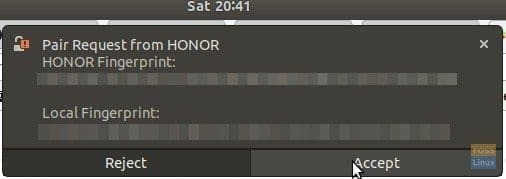
Accept Pairing on your Ubuntu PC
Step 5) Congrats! Your Android phone is now connected to your Ubuntu PC.
Sending and Receiving Files and URLs between Android Phone and Ubuntu PC
To begin sending and receiving files, you must activate some features on your PC. Go to “Mobile Settings.”

Ubuntu 17.10 Status Bar showing Mobile Devices
Step 6) Click on your phone name in the left pane of Mobile Settings. Enable “Share” to start sending and receiving files and URLs from Android Phone and Ubuntu PC. Additionally, you can enable the “Locate Device.” Using this feature, you can give a ring from your PC to find your phone hiding on a bookshelf or tucked on your couch!
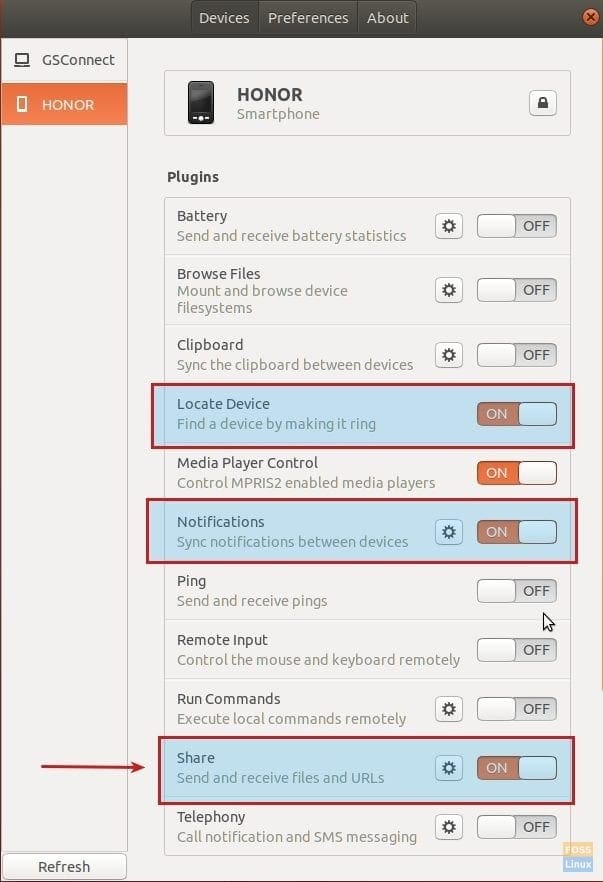
Mobile Settings
Step 7) Click “Preferences” > enable “Nautilus Integration” and “Web Browser Integration”. Also, click on “Chrome Extension” or “Firefox Add-on,” depending on which browser you used to set up GNOME extensions. Go ahead and add the extension to your browser to start sending URLs from your PC to your Phone.
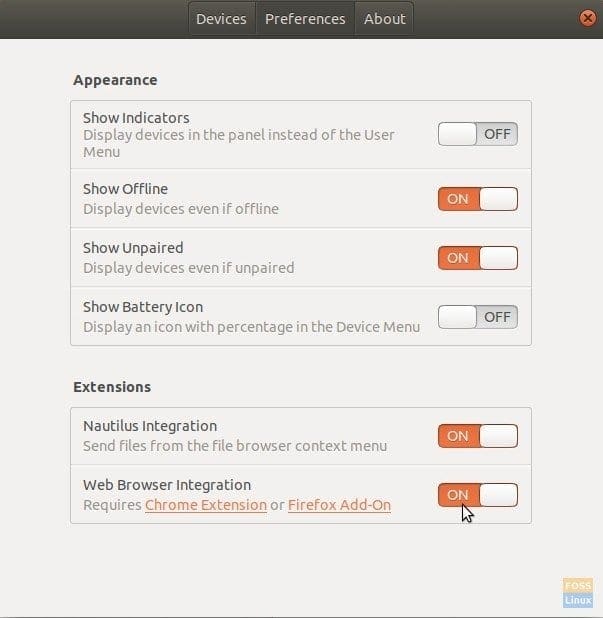
Preferences

Add GSConnect extension to Chrome OR Firefox
Step 8) To start sending URL to your phone, launch a website in your PC browser and then click “Open in Browser.” The website will magically open on your phone!
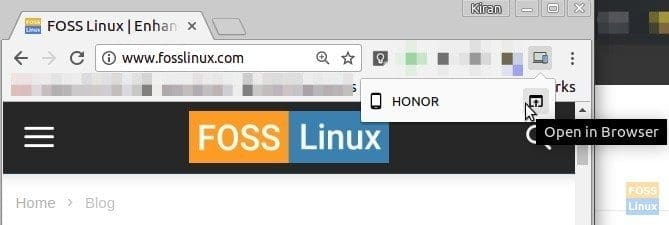
Send URL to Phone
Did you try connecting your phone? Do let us know your feedback in the comments below.

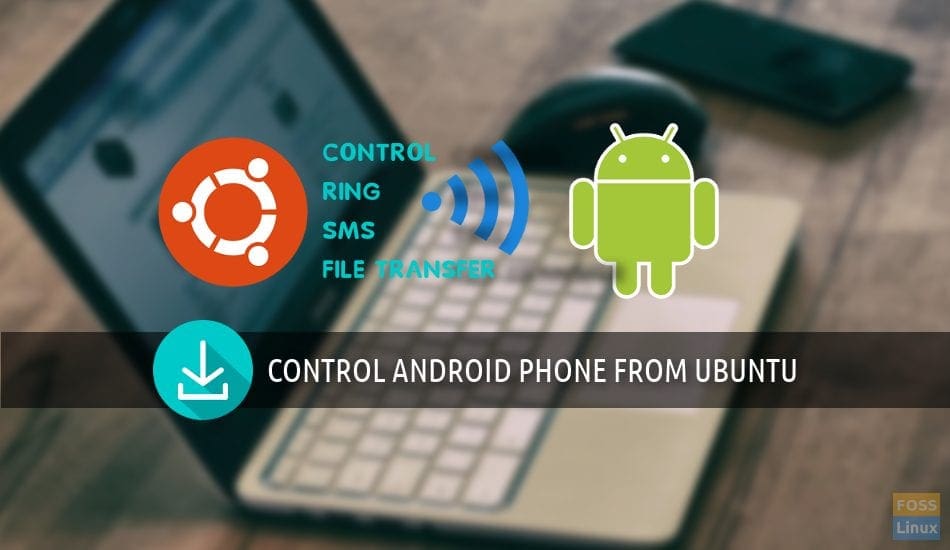
3 comments
Unfortunately, I wasn’t able to install the Kdeconnect software as it is not listed under ppa: webupd8team. Any help?
https://launchpad.net/~webupd8team/+archive/ubuntu/indicator-kdeconnect
This URL is mostly useful for beginners for any queries on UBUNTU …